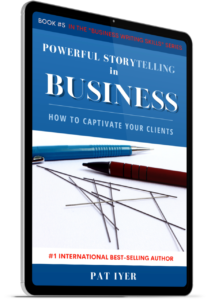Attention spans are decreasing these days, leading to brevity in writing. Social media, especially Twitter, has trained us to expect our information to be delivered in small, easily digestible packages. At the same time our audience wants our content to be interesting.
This challenges any writer and especially a beginner. You may not write fiction, but the writing errors I describe apply to reports, blog posts, newsletter articles, and other forms of nonfiction writing. The more you think of yourself as telling a story, the more readers you’ll have.
You will inevitably be using descriptive phrases. The more concise you make these descriptions, the more clearly you convey the message you want to deliver.
 Experience the Worst
Experience the Worst
The following sentence, considered one of the worst ever written in the English language, begins Victorian author Edward Bulwer-Lytton’s novel, Paul Clifford.
“It was a dark and stormy night; the rain fell in torrents—except at occasional intervals, when it was checked by a violent gust of wind which swept up the streets (for it is in London that our scene lies), rattling along the housetops, and fiercely agitating the scanty flame of the lamps that struggled against the darkness.”
In explaining why this sentence is so bad, I can illustrate some of the principles of good—and tight—writing.
One obvious observation is that it’s too long—54 words. However, longer sentences haven’t received the scorn this one has gotten. More important are the aspects that make it seem even longer.
The first phrase, “It was a dark and stormy night” has become a cliché. It tells instead of showing. It’s not specific. “Dark” and “stormy” could mean many things. Bulwer-Lytton does go on, in great detail, to describe the elements of this particular dark and stormy night, but these details don’t save the beginning. Remember, these are the opening words of a novel. Someone can read as few as seven words and decide to stop.
This isn’t only true of novels. Someone can read your non-fiction book, blog, newsletter article, or first words of your “About Me” on your website and decide to pass. You need a good title, followed by a strong start.
Use engaging description to make the most of brevity in writing
Some of the description in Bulwer-Lytton’s very long sentence is active and paints strong pictures. I can see the wind “rattling along the housetops, and fiercely agitating the scanty flame of the lamps that struggled against the darkness.”
You could imagine the wind as an invading army or a demonic force intent on destroying everything in its path. These descriptions could inspire fear. Any description that evokes an emotional response deserves its place in writing.
Bulwer-Lytton, however, dampens the mood he’s trying to build with this phrase: “(for it is in London that our scene lies).”
He needed to establish the location, but he put that information in the wrong place. What if he’d written, “It was a dark and stormy London night”? That would have eliminated eight words and prevented interrupting the emotional tone of his opening sentence.
Here’s how I would rewrite (with apologies to Bulwer-Lytton, who wrote better books, including The Last Days of Pompeii):
“In London that night, the rain fell in torrents—except when an occasional violent gust of wind swept up the streets, rattling along the housetops, and fiercely agitating the scanty lamp flames that struggled against the darkness.”
This is 37 words versus 54. This is still a long sentence. We can increase its readability and the brevity of writing by dividing it into two sentences.
“In London that night, the rain fell in torrents—except when an occasional violent gust of wind swept up the streets). The wind rattled along the housetops and fiercely agitated the scanty lamp flames that struggled against the darkness.”
How Does This Apply to You?
Look for opportunities to make the facts dramatize the emotional component, and you will write memorable content. Edit and trim your writing to achieve brevity in writing.
 Expand your storytelling skills by investing in a copy of Powerful Storytelling for Business: How to Captivate Your Clients.
Expand your storytelling skills by investing in a copy of Powerful Storytelling for Business: How to Captivate Your Clients.
In this book, you’ll learn how to:
- Tell stories about your experiences while keeping the focus on your audience,
- Show your learning points by engaging your audience with a memorable story instead of boring them with a recitation of dry facts,
- Increase your ability to persuade others through a variety of story frameworks,
- Practice studying the construction of these frameworks through spotting them in the stories included in the book,
- Outline your stories so that you can make sure you’ve constructed them in a way that makes your message clear and powerful,
- Make your stories more powerful by weeding out redundant and weak words in your stories, adding emotions, and appealing to the senses,
- Collect useful stories from your family history, your life, sources like Reader’s Digest, People magazine, and newspaper and online sources.
When you become comfortable with writing and sharing stories, you enjoy watching people lean in to hear more, and you appreciate fan messages. You realize the power of stories to changes lives. 
Order your instant download at this link: patiyer.com/books.
Pat Iyer has been writing stories since she discovered the joys of English composition in high school.
